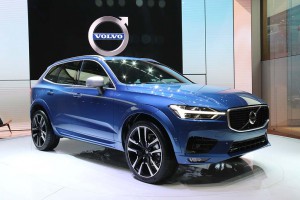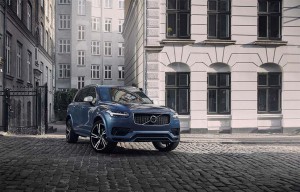The first car isn’t scheduled to roll down the assembly line at Volvo’s new Charleston, South Carolina assembly plant for another year, but the automaker already appears to be optimistic enough to plan for a second, $1 billion line.
The plant will become Volvo’s first assembly plant in the U.S., and will combine its capacity with two new facilities that have already opened in China. The Charleston facility originally was designed with just one line, and was expected to produce about 140,000 vehicles annually – relatively small by modern automotive standards. Sources indicate that will be boosted to more than 200,000 with the addition of a second line.
“The factory is extremely important for Volvo,” Lex Kerssemakers, the CEO of Volvo North America, told TheDetroitBureau.com during an interview last month. Among other things, he said, when the original investment was announced “it sent a signal” to both consumers and dealers that Volvo was making a serious commitment to the U.S. market.
(Why are Volvo’s top executives swapping jobs? Click Here to find out.)
“That was the moment retailers started to believe we were serious,” said Kerssemakers, who is being reassigned as head of European operations for Volvo.
At the time he was interviewed, the Dutch-born executive could not confirm rumors that the plant would be expanded, but did indicate there was more than enough room to add a second line. He also expressed his optimism that it would find more than enough consumer demand to sell out its production.
Initial plans call for the Swedish-based automaker to produce its new S60 sedan in the Charleston factory. It is expected to announce a second model that will share the plant before the end of this year. It is less clear when Volvo might announce the plant expansion.
The carmaker has been on a significant roll in recent years after struggling through much of the previous decade. The transformation came as it was sold off by Ford Motor Company to Zhejiang Geely Holding Group in 2010. The Chinese automaker has invested more than $6 billion so far in its subsidiary and promised to add billions more, though Kerssemakers stressed that Volvo is helping to generate much of that money as its global sales surge.
It set its third consecutive sales record in 2016, demand jumping 6.2% to 534,332 cars and utility vehicles. In its home Western European market, Volvo sold 206,144 vehicles, a 4.1% increase. The numbers were up virtually everywhere, including its largest foreign market, China, where sales climbed to 90,930 for the year. The U.S. was close behind, sales rising 18.1% to 82,276 vehicles.
(Volvo wants to change how we buy cars. Click Here for more.)
Demand in the U.S. dipped 7% during the first eight months of 2017, though that has been blamed on supply shortages caused by surging sales in other markets. As Volvo has boosted shipments to the U.S., it was able to score a 4.1% year-over-year increase last month.
Much of that has been driven by the launch of new utility models, such as the big XC90 that was named North American Truck/Utility Vehicle of the Year in January 2016. Kerssemakers was interviewed during a media drive of the all-new Volvo XC60 model in Denver.
Volvo’s apparent decision to expand the Charleston plant even before it opens reflects a much more risk-ready approach taken since the Geely acquisition. The carmaker drew plenty of skepticism when, soon after the purchase it announced it would switch to an all-four-cylinder powertrain strategy. Today, it’s most powerful models are driven by the T8 Twin Engine, a plug-in hybrid.
In June, Volvo announced it would electrify all future models starting in 2018. That will include a new battery-electric driveline, as well as the T8 plug-in, though Kerssemakers told TheDetroitBureau.com the majority of sales are expected to come from vehicles powered by more conventional hybrid powertrains Volvo is now developing.
(Click Here for more on Volvo’s electrification strategy.)



